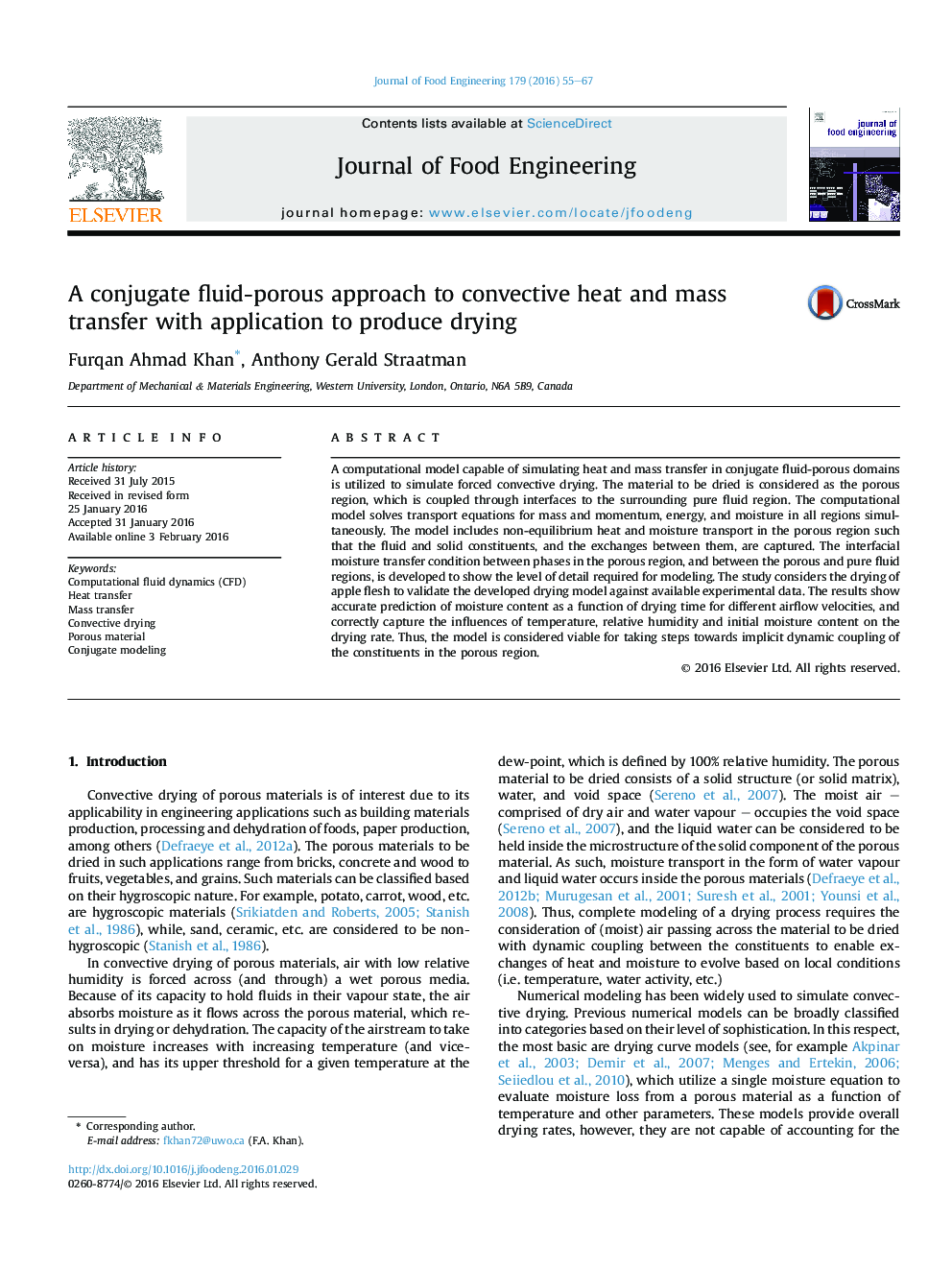| Article ID | Journal | Published Year | Pages | File Type |
|---|---|---|---|---|
| 222706 | Journal of Food Engineering | 2016 | 13 Pages |
•Model developed to simulate heat and mass transfer in fluid and porous 3D domains.•Includes capability for non-equilibrium heat and mass transfer in porous region.•Mathematical treatment described at fluid-porous domains interface.•Method for establishing transport coefficients in wet porous domain introduced.•Validation of the model by considering transient convective drying of apple slice.
A computational model capable of simulating heat and mass transfer in conjugate fluid-porous domains is utilized to simulate forced convective drying. The material to be dried is considered as the porous region, which is coupled through interfaces to the surrounding pure fluid region. The computational model solves transport equations for mass and momentum, energy, and moisture in all regions simultaneously. The model includes non-equilibrium heat and moisture transport in the porous region such that the fluid and solid constituents, and the exchanges between them, are captured. The interfacial moisture transfer condition between phases in the porous region, and between the porous and pure fluid regions, is developed to show the level of detail required for modeling. The study considers the drying of apple flesh to validate the developed drying model against available experimental data. The results show accurate prediction of moisture content as a function of drying time for different airflow velocities, and correctly capture the influences of temperature, relative humidity and initial moisture content on the drying rate. Thus, the model is considered viable for taking steps towards implicit dynamic coupling of the constituents in the porous region.
